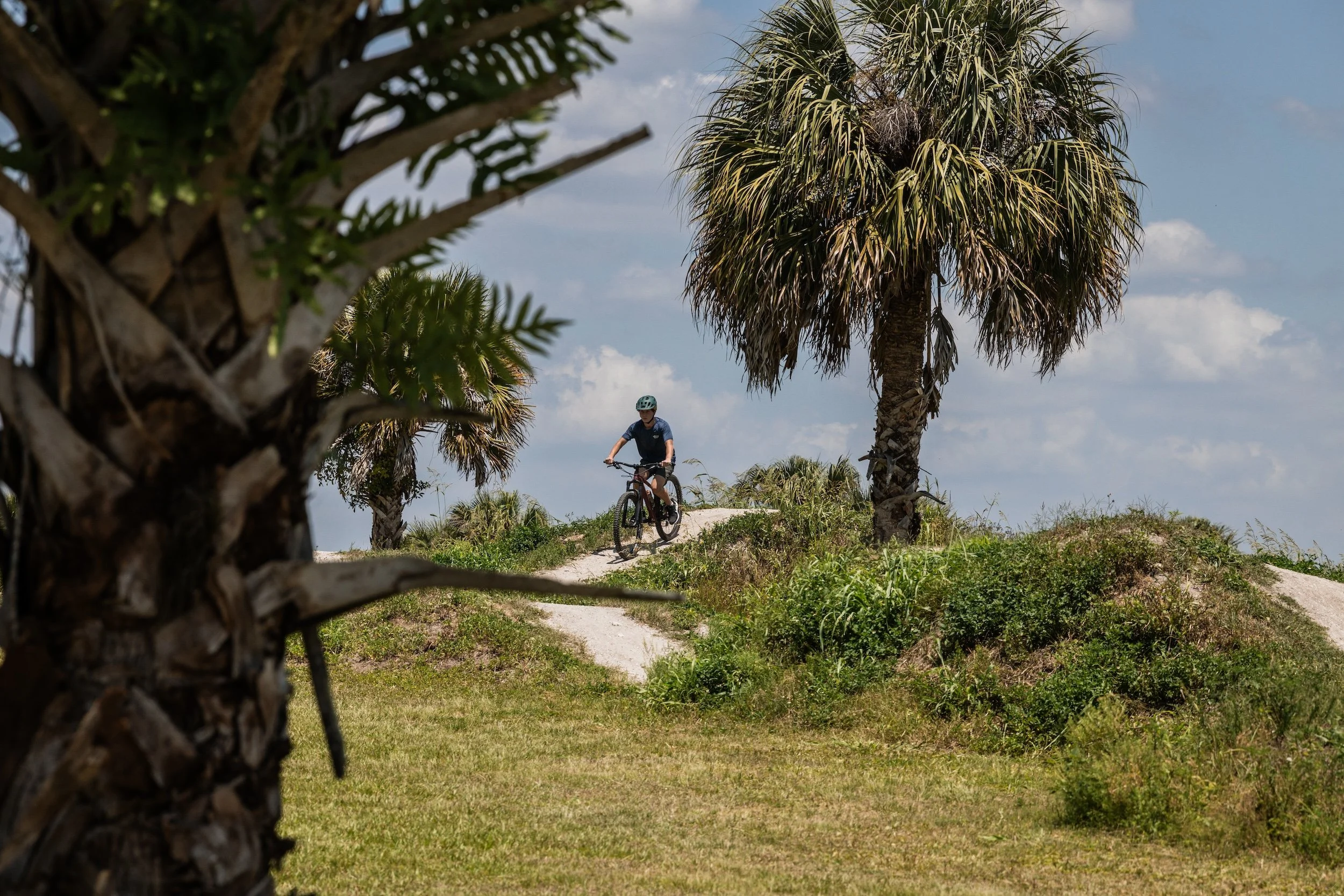Unlikely Places: Building and Maintaining Trails in SW Florida
As our plane descended into Portland, the volcanic spine of the Cascade Mountains was in full view out my window. The sun was setting, and each mountain reflected the light like beacons … Mt Hood, Jefferson, Bachelor, and others. They were a sight for weary eyes. Mountains. Snow-capped and glaciated. As our plane wove its way around Mt Hood to line up for landing in Portland, I couldn’t help but trace where I’ve ridden my bike. The dense forest hid all signs of trails, but I knew they were there.
Why do I share this?
Just that morning, I boarded a plane from hot and muggy Fort Myers, Florida. Oh yeah, and it was VERY flat. It’s not a place one thinks of when uttering the phrase “mountain biking,” let alone trail building. However, two days before my departure, I spent an afternoon exploring a trail system with the local non-profit trail group called the Florida Mudcutters. I came away from that experience in awe. That’s why I called part of this article title “Unlikely Places.” Because in a part of the state that is flat and at sea level, I wasn’t expecting a fun mountain biking experience and a group dedicated to maintaining trails.
The Florida Mudcutters is a chapter of SORBA (Southern Off-Road Bicycle Association) based in SW Florida. They started in the 90s and today have a membership of around 150. Their task? Maintain one trail system, the Caloosahatchee Regional Park. That is where I met up with Chris Painter, the Vice President. As I sat down with Chris in the shade at the trailhead, he shared more with me about what it’s like to maintain trails there and the challenges they face.
Every region has challenges in maintaining trails. Often, it’s tied to the soil type, topography, and, of course, water. Whether you’re building and maintaining trails in the lush Pacific Northwest, where I live, or in a dry, arid climate, water is always an issue. The same is true for the challenges of maintaining trails in SW Florida. Chris shared how they use shell rock mixed with the clay soil to hold the trails in the rain. It’s always a challenge.
So, how did this trail system even come about? When you initially look at the trail and go out for a ride, you’re immediately struck the terrain is not flat. Decades prior, the Army Corps of Engineers dredged the nearby river and dumped the contents where the park sits today. The trail builders were able to use these mounds to create a playground of a trail system.
For those who live in the area, this trail system is it. It’s another 2-2.5 hours to the next closest trail system. That also means the Florida Mudcutters are keen on building a trail system to accommodate everyone. In fact, they just recently opened a trail there designed specifically for kids on strider bikes, accessible right from the parking lot. As far as trailhead amenities go, they had it all there—a shelter with picnic tables, bathrooms, ample parking, and a wash station for bikes. Most of us are accustomed to little dirt patches for parking to access trails. This was exceptional and made the trails welcoming and inviting to riders of all levels.
I asked Chris what it means to be connected to SORBA and IMBA, and he quickly pointed out all of the benefits. In particular, when they are talking with land managers, in this case, the system is a county park on land the state owns, giving them credibility with local officials. They want to leverage this influence and goodwill to build more trails, pump tracks, and skill areas. While the origin story of mountain biking and trail building are deeply rooted in bootleg trails, most everyone now realizes how much more good can be done when working in partnership with local government leaders. For some, it takes a while to undo relational damage from the rogue mentality of mountain bikers “back in the day.”
When I showed up at the park, there was an event and a group ride taking place. It was the perfect time to be there. After introductions and fun warm-up games in the parking lot, the group set off to session the jump line before heading out for a loop. A couple of the riders there were from Southern California. As I chatted with them after the ride, they shared how impressed they were with the trails and the thoughtfulness that went into making this a fun trail. While having little elevation to work with, the builders made for a fun and exciting trail system with punchy climbs and quick descents.
As I was reflecting on this while staring out at Mt Hood from my seat on the airplane, I was reminded that mountain biking and trail building can and do happen anywhere and everywhere. Thank you to all of you who are continuing to make trails accessible to more people. The tide continues to change, and momentum is growing. There are all kinds of trails to be explored, even in the most unlikely of places. Keep it up!
Words: Sean Benesh Photos: Sean Benesh
ABOUT THE AUTHOR
Sean Benesh
Sean is the Founder and Editor-in-Chief of Trail Builder Mag. He is also the Communications Director for the Northwest Trail Alliance in Portland, Oregon. While in grad school, he worked as a mountain biking guide in Southern Arizona. Sean also spends time in the classroom as a digital media instructor at Warner Pacific University.






























